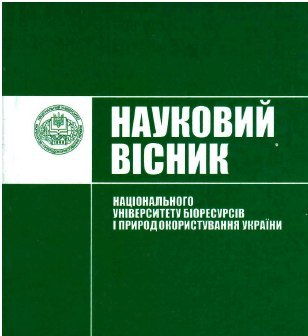The system-based nature of translation as a synergetic process
DOI:
https://doi.org/10.31548/philolog0(263).2017.0194%20-%20201Abstract
The article deals with the study and analysis of the concept of "synergetics" and the possibility of using a synergistic approach in the translation process study. The main characteristics of the synergistic approach and the translation process are described in terms of synergetics.
Translation process is a complex system of interlanguage transformations, like any other system, it is capable of fluctuation and inference that, however, keeps conceptual and semantic integrity.
Synergetic approach enables exploring different ways of possible equivalents in the process of translation. Within the synergistic terminology a unique attractor in translation is a word and its possible variations in translation. In dissipative systems such as translation, the points of intersection provide multiple options, so a good choice of an equivalent depends on various fluctuations in the translation process.
Every kind of translation contains a translation space, in which both symmetrical and asymmetrical elements can be distinguished. The analyzed translations showed that in the bifurcation points we may observe various options of choosing suitable Ukrainian variants, which create a particular perception of each translation. When translating, translators seek adequate variants, but each of them acts in a different way in the points of bifurcation. In the fluctuations zones, interpreters intuitively pick the most successful, in their opinion equivalents. Ultimately adequate harmonious interpretation is obtained.
References
Babenko, O. V. (2015). Linhvosynerhetychnyi rakurs doslidzhennia anhliiskoi movy: diakhronichnyi aspekt [Lingvosynergetic area of research of the English language]. Proceedings of National University “Ostroh Academy”. Series: Philological, 58, 135-137.
Zarytsʹkyi, M. S. (2004). Pereklad: stvorennya ta redaguvannya [Translation: creation and editing]: Posibnyk ,Kyiv: Parlam. Vyd-vo, 2004,120.
Kushnina, L. V.( 2011). Perevod kak synerheticheskaya sistema [Translation as asynergetic system].Vestnik Permskogo universiteta, 2011, Vyip. 3(15) Rossiyskaya i zarubezhnaya filologiya,194-197.
Lomakina, I. N. (2014). Osobennosti lingvosynergeticheskogo analiza mifopoétiki (na materiale romanov Dona Delillo) [Features of lingvosynergetic analysis of mythpoetics(based on the novel by Don Delillo)].Kultura narodov Prichernomorya, № 271, 194-197.
Lotman, Iu. M. (1992). Semiotika kultury i poniatie teksta [Semiotics of culture and notion of a text].Izbrannye stati, T. 1.Tallynn, 129-132.
Myshkina, N. L.(1998). Vnutrenniaya zhyzn teksta: mekhanizmy, formy, kharakteryistiki [Inner life of a text: mechanisms, forms,description].Perm: Izd-vo Perm. Hos. Un-ta, 152.
Psurtsev, D. V. (2002). K probleme perevoda i interpretatsyy khudozhestvennogo teksta: ob odnom kryterii adekvatnosti [To the problem of translation and interpretation of a literary text: about one criteria of adequacy] Moscow. :Vestnik MHLU, Vyp. 463. Perevod i diskurs,16-26.
Ronzhyna Ia. N.(2016). Otsenka perevodcheskih resheniy s pozitsiy sinergosemioticheskogo podhoda [Evaluation of transaltion decisions through synergetic approach]. Filolohicheskie nauki. Voprosy teorii i praktiki. Tambov: Gramota, № 4(58): v 3-kh ch. Ch. 1, 146-149.
Downloads
Published
Issue
Section
License
Relationship between right holders and users shall be governed by the terms of the license Creative Commons Attribution – non-commercial – Distribution On Same Conditions 4.0 international (CC BY-NC-SA 4.0):https://creativecommons.org/licenses/by-nc-sa/4.0/deed.uk
Authors who publish with this journal agree to the following terms:
- Authors retain copyright and grant the journal right of first publication with the work simultaneously licensed under a Creative Commons Attribution License that allows others to share the work with an acknowledgement of the work's authorship and initial publication in this journal.
- Authors are able to enter into separate, additional contractual arrangements for the non-exclusive distribution of the journal's published version of the work (e.g., post it to an institutional repository or publish it in a book), with an acknowledgement of its initial publication in this journal.
- Authors are permitted and encouraged to post their work online (e.g., in institutional repositories or on their website) prior to and during the submission process, as it can lead to productive exchanges, as well as earlier and greater citation of published work (See The Effect of Open Access).

